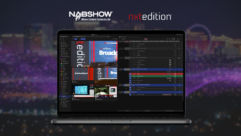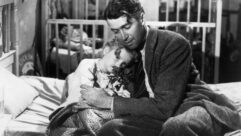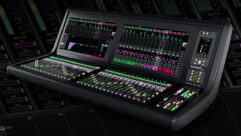
L.A. Story
Brett Ratner calls his Kaleidescape ?the coolest thing in the world.? In fact, the filmmaker behind the ?Rush Hour? franchise recently told the showbiz trade paper Daily Variety that he uploaded each of his 10,000 DVDs to his home media server ? a device he says he’s become so enamored with that he rarely leaves his Beverly Hills, Calif., home.
Brett Ratner calls his Kaleidescape “the coolest thing in the world.” In fact, the filmmaker behind the “Rush Hour” franchise recently told the showbiz trade paper Daily Variety that he uploaded each of his 10,000 DVDs to his home media server — a device he says he’s become so enamored with that he rarely leaves his Beverly Hills, Calif., home.
Keith Willis and Jon Heberling, co-owners of Innovative Theaters in West Hollywood, Calif., maintain an affluent client base of mostly entertainment industry pros in the high-end home theater market. Last year, they opened a Moroccan-style demonstration theater that allows customers to see and hear the difference between low- and high-end home theater systems.
“It costs a fortune, but it’s the most state-of-the-art system — and it’s really worth it, as I ran out of space for all of my DVDs,” he says.
Of course, Ratner isn’t the first showbiz luminary to put a large chunk of his sizable earning power into a home entertainment system. It was Hollywood, after all, that gave birth to the home theater. In its golden age, studio bosses routinely outfitted their lavish Mediterranean-style homes with built-in projection rooms. Back in the 1960s, Lew Wasserman, chief of Universal Studios at the time, sported what was then the ultimate in Hollywood home projection facilities, which featured a sliding aluminum roof and couch-side buttons for controlling audio-tape machines, radio, and the movie sound-track volume.
Such automation is quaint by today’s standards, with 22 percent of U.S. residents owning some kind of home theater system, according to the Custom Electronic Design & Installation Association (CEDIA), based in Indianapolis. Still, the affluent niche market surrounding Southern California’s film and TV production infrastructure remains a uniquely lucrative one for the residential AV systems integrators who service it. Perhaps no where else on Earth do so many $100,000-plus residential AV systems exist in such close proximity.
In fact, this high-end market is more lucrative than ever, with price points for complete system installations falling to where those without studio boss coin can afford a robust home entertainment system — but not descending so far as to put AV integrators into low-margin, high-volume competition with so-called “trunk slammers” and the home theater installation arms of the major electronics stores.
“Technology the last three or four years has changed dramatically,” notes Keith Willis, who along with partner Jon Heberling, has operated West Hollywood, Calif.–based Innovative Theaters since 1997. “Projectors are brighter, their resolution is considerably higher, and the cost has come down significantly.”
Willis says his company has experienced consistent 40 percent growth in each of the last three years, serving a client base that’s largely made up of those working in the entertainment field.
“Business has been booming the last several years,” agrees Terence Mulholland, the CEDIA-certified owner operator of Santa Monica, Calif.–based Beyond Home Theater. With entertainment-industry denizens comprising up to 70 percent of his company’s client portfolio, Mulholland says annual growth topped 100 percent recently. “This has to be one of the most lucrative markets [for home theater installers]. Obviously, there’s a vast amount of wealth in L.A.”
Characterizing Los Angeles as one of those markets that never gets cold, Zack Fagan, general manager for the Los Angeles office of Audio One, says business is good even when the market is not booming. “There are always big homes going up and a need for what we do,” he says. “There are a lot of wealthy individuals — many of them famous — who are comfortable dropping, two-, three-, or four-hundred thousand dollars on a home theater system.”
Because his client, a film industry executive, was adamant about his home theater technology being hidden when not in use, Terence Mulholland, owner and operator of Beyond Home Theater in Santa Monica, Calif., designed a living-room system around a retractable projectiondesign Action! model three 1080p projector mounted on a Chief SL-236 lift and a 100-inch Stewart Visionary Electriscreen with QED drive. The home theater system, along with Somfy Shades and Vantage lighting, is controlled via an AMX MVP-8400 touchpanel.
Fagan joined the Miami-based Audio One in 2003 —the company was almost exclusively a builder of home recording studios at the time. He was brought onboard to help oversee the installation of a recording studio for rock icon Ozzy Osbourne. Soon, however, Fagan found himself installing a lot more than a recording studio into Osbourne’s Beverly Hills home, as the heavy metal crooner learned about new possibilities for home theater, lighting, and automation.
Operating within a budget of what he describes as well over $100,000, Fagan installed a 61-inch Runco plasma display and four racks of AV equipment into Osbourne’s living room, including a Lexicon RT-10 DVD player and MC-12 surround-sound processor. The system was tied together with a Crestron Pro 2 processor and MT-1000 touchpanel, which were also integrated into other systems, including controls for the pool and spa.
“We built a big home theater for Ozzy, and we’ve been doing it ever since,” Fagan notes. “I think Audio One is probably the only company out there doing both high-end home theater and recording studios.”
Indeed, quite suddenly, Audio One was in the home theater business, with other music-biz well-knowns, such as Ringo Starr, Olivia Newton-John, and Paula Abdul, signing up the company to install home theaters and home automation systems. Fagan says that about 70 percent of Audio One’s home theater clients come from the entertainment world and that the company has experienced “exponential growth” in this sector over the last few years.
Specializing in the highest-end spectrum of projects, Innovative Theaters — the partners of which have serviced the L.A. home theater market going back two decades — also sports a client roster rich in celebrities and studio execs, with a Los Angeles Lakers Hall-of-Famer and several other local sports stars thrown into the mix. Building 20 to 25 home theaters a year, on average, the company’s growth, partner Heberling says, hasn’t come so much from increased celebrity traffic, but the increasing accessibility of its work to upper-middle-class consumers.
“If you go back to the early and mid-1990s, almost all of our clients were in the [entertainment] industry or of similar means,” Heberling explains. “They’d spend $150,000 to $200,000 just on the electronics alone.”
In recent years, however, Innovative Theaters has been able to offer clients less expensive projection systems based on DLP technology. Meanwhile, the company has created standard, mostly pre-fabricated design templates that have aided its pricing model —recently added to those templates has been a set drafts specifically designed to cater to the burgeoning downtown L.A. residential lofts market.
Heberling says his company’s price point can now go as low as $50,000, “which is in line with what a kitchen remodel would cost.”
Having recently relocated from Santa Monica to West Hollywood, Innovative Theaters is now a stone’s throw from the Pacific Design Center, a hub for the city’s cutting-edge residential architecture. Heberling and Willis now get much of their business through connections with architects overseeing home renovations or new construction for an affluent client base.
Last year, they opened up a showroom, complete with a Moroccan-style demonstration theater that features 14 custom-built leather chairs (one of the company’s more stylish offerings). The demo facility — which can toggle between three separate AV systems of varying quality at the push of a button —allows Innovative Theaters’ clients “to hear the difference between a $10,000 home theater system and a $70,000 system,” Willis says.
For Innovative Theaters, however, demonstrating its high-end home theater technology is key, but showing how it can hide these gadgets within an elegant design is equally important to its clients.
It is in this demo theater that Willis and Heberling show off their company’s ability to hide speakers seamlessly within walls, while using stretchy fabrics to obfuscate just about anything else. “Within the interior of a room, it’s very important to many of our clients that you don’t see any of the technology,” Willis explains. “Many of them don’t want to be overwhelmed by the technology until they turn on their system.”
For most of clients at the high end of the market, how you hide things — how professional your installation looks — is everything, explains Mulholland, a British Royal Navy Engineering School graduate. “They certainly don’t want to see any wires,” he says.
Indeed, working for affluent clients who are often steeped in knowledge of design and aesthetics — not to mention sound and picture quality — can be a challenge for high-end Los Angles–based residential systems integrators.
“I’m doing the home of a film director right now,” Mulholland says. “For him, it’s critical that everything is in 1080p (resolution) — he wants everything in high-definition, both Blu-ray and HD DVD (see sidebar). This is a guy who works in special effects. He knows what a quality image looks like, and he can see the difference between good high-definition and bad high-definition.”
Sound quality must be equally scrutinized. If a job is particularly high-end, Mulholland subcontracts the task of establishing a controlled acoustic environment to Tony Grimani, a former director of consumer technologies at THX.
“This kind of [higher-end] client can be more demanding,” Mulholland concedes. “But it’s never been a problem — it just means that I have to do my job well and that my systems have to be well-designed. I have to carefully explain to the client the limitations of the system and why he needs a $1,500 DVD player instead of a $300 DVD player.”
Southern California’s high-end residential AV market has boomed right along with the robust growth in home equity in recent years — a factor no doubt contributing to the rise of the broader upper-middle-class market. Still, most integrators in the area expect to feel at least some effects from a cooling housing market.
“There has usually been a point in the last several years where we’ve been so busy that we’ve had to turn people away, but that hasn’t happened this year,” Mulholland notes. “We’re still fortunately busy, but the work has slowed down a bit.”
Other integrators fear the morass of competition at the lower end of the market could matriculate up toward the higher end. “It’s becoming a tighter market because a lot more guys are getting into it, and prices are coming down,” says David Mortellaro, owner of Zen Cinema in Woodland Hills, Calif.
Happily for integrators servicing the high-end of the market, their clients tend to be somewhat recession-proof.
“Maybe that portion of the market that’s willing to spend $50,000 to $100,000 on a home theater system has slowed,” Mulholland notes. “But by and large, rich people are still rich. The higher-end stuff is still going strong.”
DISC DITCHERS
Pricey Kaleidescape media server technology has become the in gadget for the affluent Hollywood home-theater market.
Often providing a useful snapshot for massing media-consumption trends, the Los Angeles high-end home theater market would seem a logical flash point for the format war currently being waged by HD DVD and Blu-ray.
A decade ago, it was the region’s film industry pros themselves who provided an important early-adopter base for DVD. Energized as DVD consumers, these denizens not only provided endorsement, but they also transformed the disc into something more than a playback option to VHS, creating waves of remastered works that took advantage of DVD’s superior sound and picture quality as well as bonus features that capitalized on its non-linear storage abilities.
So far, however, movie creatives haven’t embraced either of the two high-definition disc formats with the same gusto.
Unlike the average Best Buy customer, these affluent home theater buffs aren’t necessarily waiting for the format war to resolve itself before they buy a high-end Toshiba HD DVD drive or a top-of-the-line Blu-ray player from Sony, Samsung, Pioneer, or LG.
“Given the cost of some of our [home-theater] projects, we usually recommend to our clients that they install both kinds of players,” notes Keith Willis, who co-owns Innovative Theaters in West Hollywood, Calif., and services an affluent client base of mostly entertainment industry pros. “It’s a real bummer when you want to see a James Bond movie, and it’s only on Blu-ray, and you only have an HD DVD device.”
While these high-end film buffs aren’t sitting on the sidelines before adopting playback ability for both formats, they do seem to be waiting for all titles to be available in one format before building up their libraries.
Currently, Sony Pictures — which recently released the popular “Casino Royale” in high-def — along with Disney, Fox, and Lionsgate issue their titles exclusively in the Blu-ray format, while Warner Bros. and Paramount release in both Blu-ray and HD DVD. Universal remains the only major studio to release its hi-def wares exclusively in HD DVD.
The studio’s top officials have received ample pressure this summer from constituents in the media, retail, and electronics businesses to release at least some of their movie catalog in Blu-ray. Such a move would put every major studio under the Sony-championed Blu-ray umbrella, and is thus viewed as the catalyst to ending the consumer confusion of the two-format race, opening up the high-def disc market to wider adoption.
Comments from Universal executives, however, indicate the studio is sticking firmly beside an HD DVD camp that also includes Toshiba and Microsoft as its key backers.
As the two formats continue to slow each other’s uptake, the high-end home theater market seems to be experimenting with new distribution platforms that don’t use discs.
Zack Fagan, general manager of Los Angeles–based residential AV integrator Audio One, notes that distributed video systems are quickly catching on among his company’s affluent client base, with media servers like the Kaleidescape —which is scalable to seemingly infinite amounts of digital storage for MP3 music files as well as both standard- and high-def video — gaining in popularity.
“Almost every client that requests distributed audio also requests distributed video now,” Fagan notes. With an entry-level price tag of nearly $10,000, the Kaleidescape is “an expensive option,” he concedes, “but it’s definitely one we’re now selling on a regular basis.”
In fact, Kaleidescape already has its share of prominent film-business backers, with notables including George Lucas and Brett Ratner integrating the device into their home theater systems.
For an upscale clientele looking for elegant solutions to storing and cataloging their media collections, such digital storage solutions might have greater appeal than piling on Blu-ray or HD DVD discs to a library already overflowing with standard-def DVDs.
Warren Lieberfarb, who as president of Warner Home Video, championed the development and adoption of DVD a decade ago, suggests that the longer Hollywood’s majors dicker with the Blu-ray and HD DVD battle, the greater the chance that neither technology will ever achieve wide-scale adoption.
“If the studios continue to drag their feet on this, there’s not going to be this huge [high-def] optical media business,” he notes. “Digital and VOD are moving too fast.”
Daniel Frankel is a freelance writer based in Los Angeles.He can be reached at [email protected].









